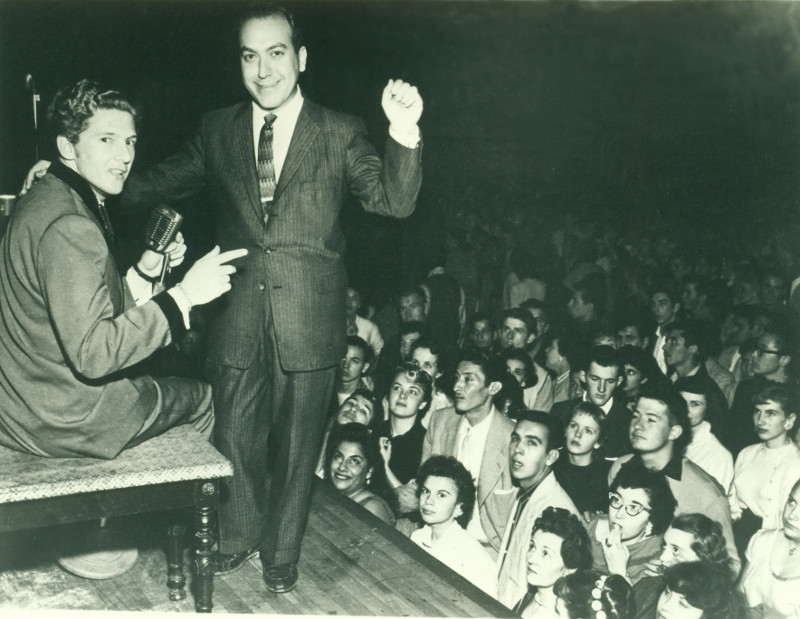
Ed. note: artsmeme is delighted to share with readers the first of three excerpts from an exciting new book by author Julie Malnig. Dancing Black, Dancing White: Rock ‘n’ Roll, Race, and Youth Culture of the 1950s and 1960s (Oxford University Press, May 2023) explores the highly popular phenomenon of televised teen dance programs, incubators of new styles of social and popular dance that both reflected and shaped social and political issues of the day. Excerpt starts here:
The years 1952 through 1959 can be considered televised teen dance’s “golden years,” when the shows proliferated at an astonishing rate. Television was still gaining traction, and producers and network executives were willing to gamble on the new and unproven. While American Bandstand has become most well-known—largely as a result of its national reach—it was actually just one of many teen-oriented dance shows that sprang up in most major cities across the country. There was at least one bandstand-type show in most urban areas in the U.S. and parts of Canada. Broadcast from Providence, Rhode Island to Los Angeles, California, these local shows were in some ways more popular than Dick Clark’s national broadcast, since they featured youth from the city and surrounding region with whom studio and home audiences knew or could at least identify. Different styles of dance and behavior were projected by teenagers nationwide, and as a result, the shows came to reflect and create teen life.
In addition to the shows explored in this chapter—Dick Clark’s American Bandstand, Alan Freed’s The Big Beat, The Buddy Deane Show, and The Milt Grant Show—were many others that took root by the late 1950s; some of these were outgrowths of some of the earliest teen dance shows mentioned in Chapter 1, yet others were new. From a very large pool of shows that existed, these are a few: Cleveland Bandstand (WJW-TV, Cleveland); The Al Jarvis Show (KLAC-TV, Hollywood); The Art Laboe Show (KPOP, KTLA; Los Angeles); Red, Hot, and Blue (WHBQ-TV, Memphis); Studio Party (WABD, Dumont); Seattle Bandstand (KING-TV, Seattle)and Portland Bandstand (KGW-TV, Oregon).[i] Overall, this book’s focus on the many local shows recognizes their importance in capturing regional mores and dance styles. It was in these smaller venues that hundreds of variations of major social dance and dance steps were born. The shows, in which teenagers learned steps and moves from each other, became a meeting ground for youth to experiment with all things “teenage”—from dating practices and social graces to rock and roll dance. It was not any one show that was responsible for the teen dance phenomenon (as many commentators contended of American Bandstand), but rather a constellation of shows that drew youth audiences from around the country and helped to create and sustain a national youth culture.
[i] Red, Hot, and Blue was hosted by Southern deejay Dewey Phillips who was immortalized in the Broadway show Memphis in 2009. For more on Phillips, see Louis Cantor’s Dewey and Elvis: The Life and Times of a Rock ’n’ Roll Deejay (Champaign, IL: University of Illinois Press, 2014
Julie Malnig is Professor of Dance and Theater Studies at The Gallatin School of Individualized Study at New York University. Her prior works include the edited collection Ballroom, Boogie, Shimmy Sham, Shake: A Social and Popular Dance Reader (University of Illinois Press, 2009) Dancing Till Dawn: A Century of Exhibition Ballroom Dance (NYU Press, 1995).
